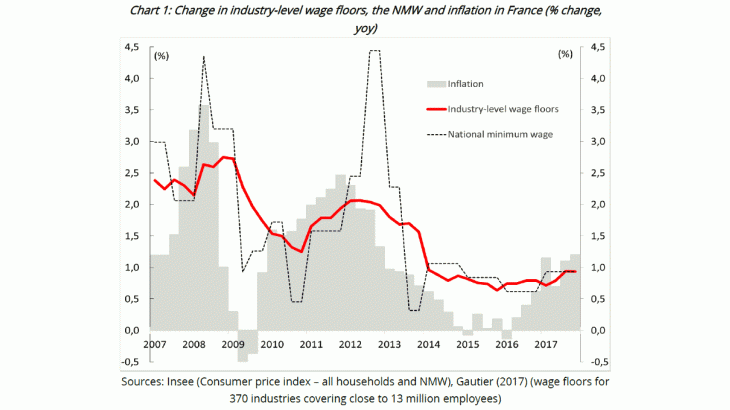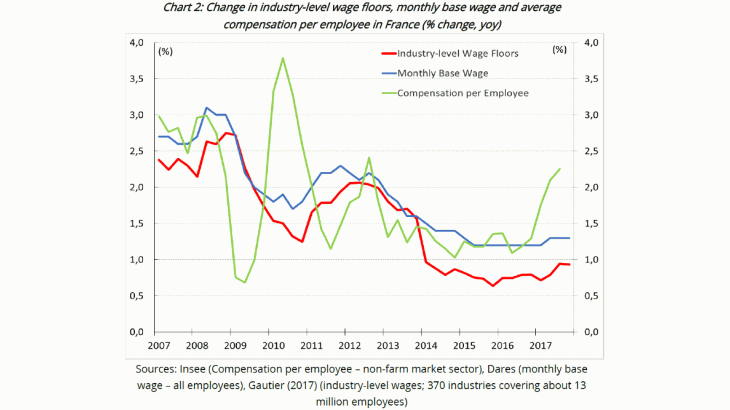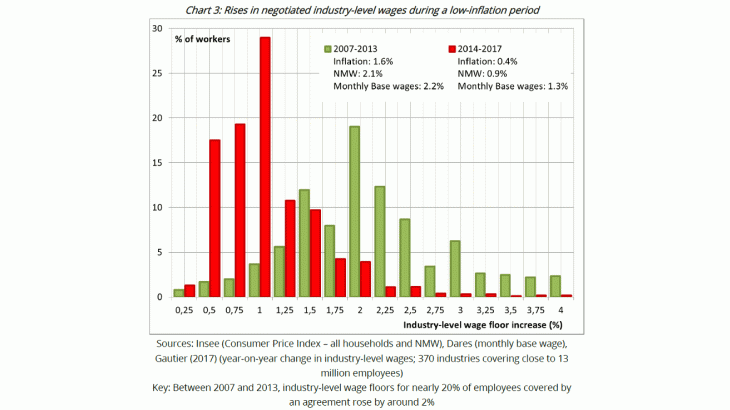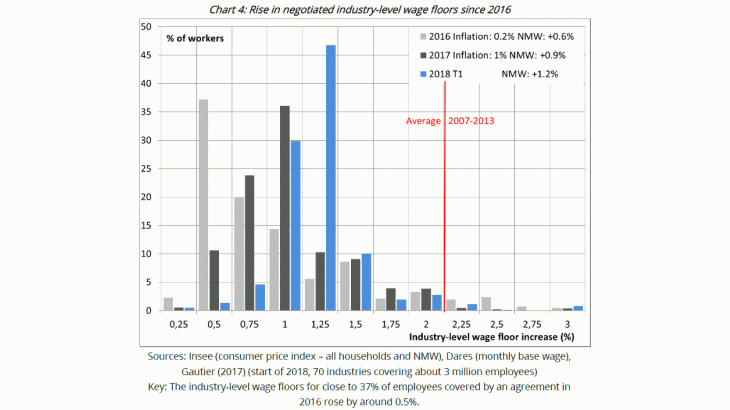The monthly base wage and industry-level negotiated wages follow similar trajectories (Chart 2). However, the base wage generally rises at a higher rate than industry wage floors as it includes pay rises negotiated within individual firms or by individual employees, on top of any adjustments to the floor. The monthly base wage accounts for 80% of total employee compensation. During an economic recovery, growth in total compensation can also be boosted by the variable components of an individual’s pay, such as overtime and bonuses. Thus, at the end of 2017, average compensation per employee, which includes overtime and bonuses, rose at a higher rate than the monthly base wage or than negotiated wages (Chart 2). Moreover, growth in negotiated wages and in the monthly base wage is measured assuming no change in the workforce composition, whereas average compensation per employee takes into account changes in the workforce composition (in terms of skills and part-time work).
Since 2008-09, growth in nominal negotiated wages has gradually slowed in line with the declines in inflation and in productivity gains. From 2007 to 2009, industry-level wage floors rose at an annual rate of over 2%, despite the 2008 crisis and the falls in labour productivity. However, from 2010 to 2013, this rate slowed to 1.5% per year and, more recently, from 2014 to 2017, it has remained below 1%. Among the main euro area economies, Italy has seen comparable growth to France in negotiated wages: between 2014 and 2017 they rose by 0.9% per year in nominal terms, compared with around 2% growth for the period 2007-13. In contrast, in Germany, where the unemployment rate was under 4% of the working population in 2017, growth in nominal negotiated wages has remained robust, averaging around 2.5% per year from 2014 to 2017.
Growth in negotiated wages depends on past inflation and changes in the minimum wage
The slower growth in negotiated wages observed since 2014 can be explained by less regular wage agreements, but also by a reduction in the size of the bargained adjustments (Chart 3). The near-zero inflation period has been characterised by wage-floor rises of 1% or less, whereas prior to 2014 the increases were clustered around the 2% level. That said, in real terms, average growth in negotiated wages has remained positive and has even accelerated a little since 2014 (0.4% growth prior to 2014 and 0.6% growth after 2014).
Rises in industry-level wage floors are mostly driven by two factors: inflation and changes in the NMW (Fougère et al. 2016). The reference used for wage bargaining in a given year is the inflation level observed in the previous year. Thus, a pick-up in inflation will not translate immediately into an increase in negotiated pay. The NMW, which is indexed to past inflation, is also used as a reference for wage bargaining. As a result industry-level wages are even more closely correlated with past levels of inflation. Although negotiated wages are highly dependent on past inflation, they are less sensitive to changes in business conditions or unemployment.



